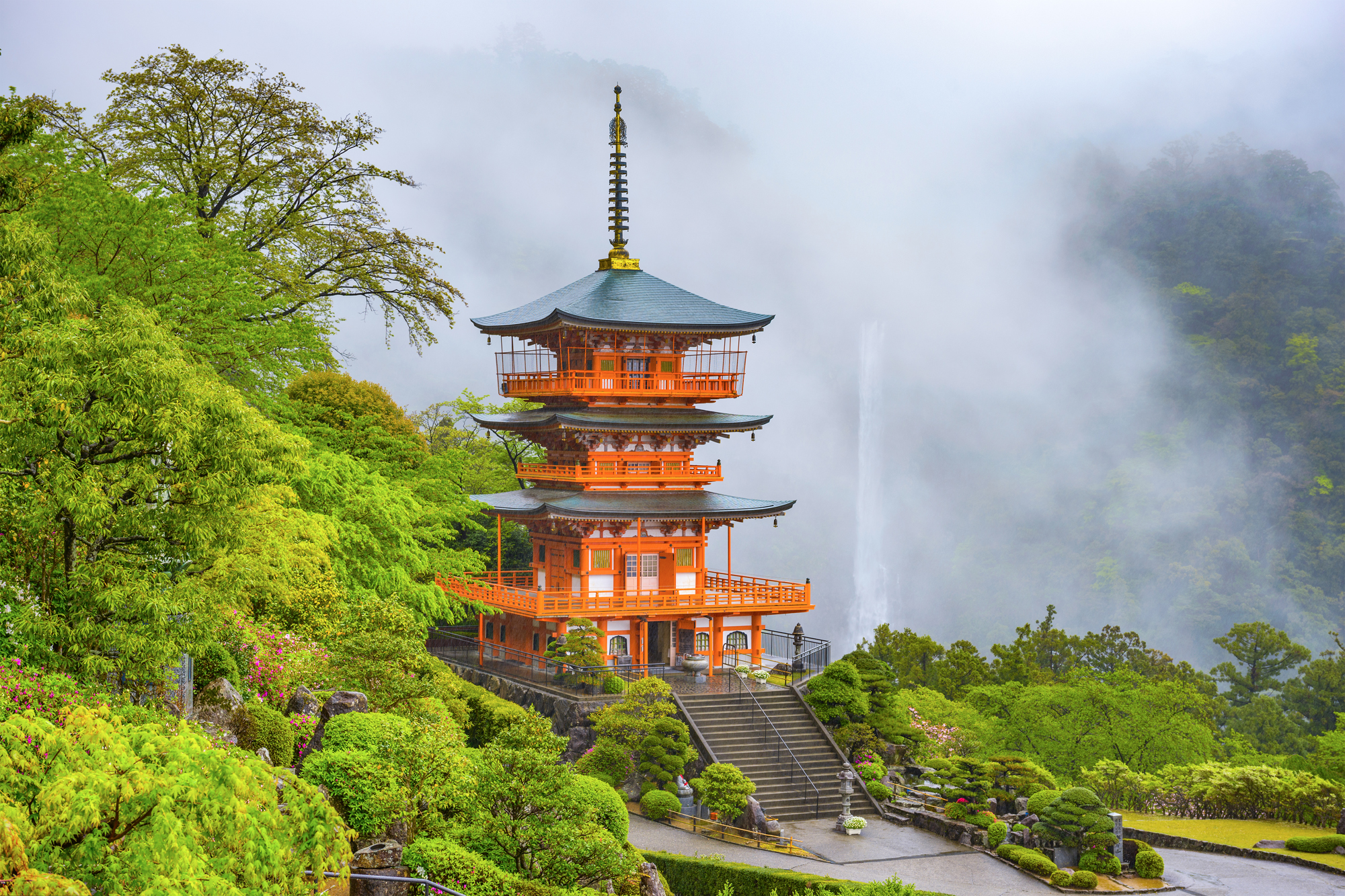The Kii Peninsula is a land of ancient spiritual paths and holy mountains. Until the Meiji Era (1868-1912), the peninsula was the site of the Kii Province. Now, a part of Wakayama Prefecture, the area is famous for onsen (hot springs), fish and produce like mikan (mandarin oranges) and ume (plums), and is home to temperate rainforests, mountains and a beautiful coastline. The prefecture is known as a place of rich cultural heritage, in part because of its connection to the Kii Province and the Kumano Kodo trail, but also because of the many traditional arts that are practiced there, including aikido, which was founded by Morihei Ueshiba in Wakayama.
For thousands of years, the Kii Peninsula was a site of worship for both Buddhism and Shintoism, thanks to shinbutsu shūgō, the pre-Meiji Era syncretic practice of the two beliefs. Though Shintoism and Buddhism are now separated into their present-day, distinct forms, the peninsula is considered to be holy by members of both religions.
In 2004, UNESCO recognized this history — along with the peninsula's natural beauty — and, in doing so, conferred World Heritage status to the sacred sites and pilgrimage routes found in the Kii Mountain Range. These sites include Mount Koya, the home of Shingon Buddhism, Mount Yoshino and Mount Omine, as well as the three shrines of Kumano. A total of 242 separate locations, natural and man-made, were part of the designation, including many locations along the Kumano Kodo — an ancient pilgrimage route linking Mount Koya to Nachi Falls, near the southern tip of the Kii Peninsula.



















With your current subscription plan you can comment on stories. However, before writing your first comment, please create a display name in the Profile section of your subscriber account page.